
Miners Strike Ice Age Gold Finding a Mummified Wolf Cub
A new study has revealed exciting information about a mummified wolf cub that was found in the Canadian permafrost. Scientists say the little creature that was discovered by miners in the Yukon is “the most complete wolf mummy known.” They have been studying this excellent specimen for a few years now and have finally announced details on various aspects of the cub's life, including her age, diet, and the probable cause of her death.
The story of the wolf cub made headlines in 2018, announcing that the cub and a caribou calf were both discovered by miners who were searching for gold in the Yukon. The discovery of the two animals from the ice age in such great condition is rare and it has excited scientists and the local community. The mummified remains are important as they can help scientists to better understand the lives of animals in the ice age and conditions in the environment tens of thousands of years ago.
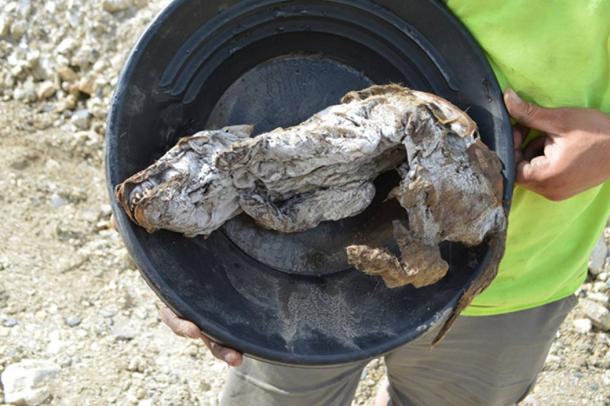
This photo shows the wolf cub as she was found. (Government of Yukon)
New Insights on the Life and Death of the Wolf Cub
Now, a new study published in the journal Current Biology declares that the wolf cub is female and has been named Zhur, which means ‘wolf,’ by the local Tr'ondek Hwech'in people. DNA analysis and X-ray data have revealed many aspects of the wolf cub’s life. For example, the scientists have discovered that Zhur lived and died between 56,000 and 57,000 years ago. The wolf cub is related to ancient Beringian and Russian gray wolves and she died when she was about 7 weeks old.
Professor Julie Meachen, a paleontologist and professor of anatomy at Des Moines University in Iowa, also told reporters how the young wolf cub died, saying “We think she was in her den and died instantaneously by den collapse. Our data showed that she didn't starve and was about 7 weeks old when she died, so we feel a bit better knowing the poor little girl didn't suffer for too long.”
In their research, the scientists discovered what Zhur ate too, and it was something of a surprise. “Normally when you think of wolves in the Ice Age, you think of them eating bison or musk oxen or other large animals on land,” Meachen said, “One thing that surprised us was that she was eating aquatic resources, particularly salmon.”
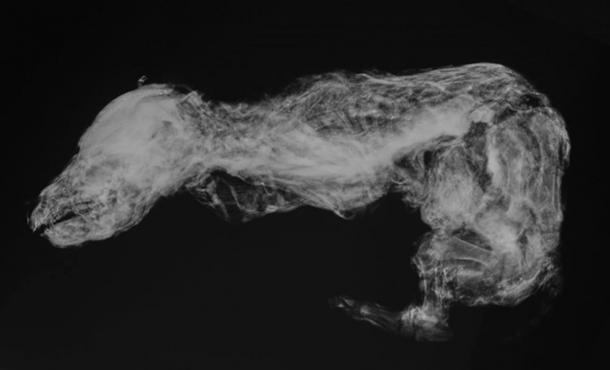
An x-ray view of the mummified wolf cub. (Government of Yukon)
Mummified Animals in the Permafrost
In territories beyond the Arctic circle, there have been numerous discoveries of mummified remains of extinct and extant animal species from the ancient past. In Siberia, there have been exhilarating finds of mummified animals in the permafrost. In August 2018 an almost complete 40,000-year-old foal was discovered in the Yakutia region of Siberia, which is renowned for such discoveries. The remains can be near perfectly preserved because of the extreme Arctic conditions that freezes the dead animals, slowing or even halting the natural processes of decay.
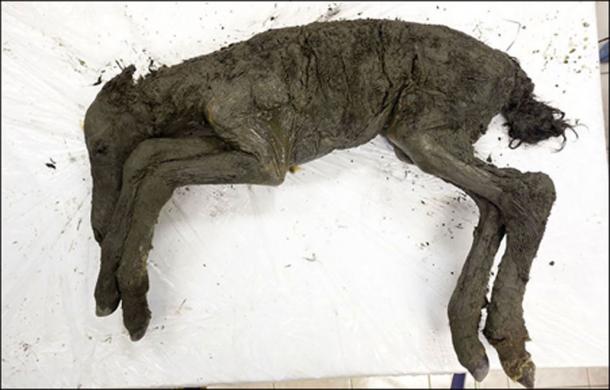
The foal that was found in Batagai crater Yakutia in 2018. (Image: The Siberian Times)
The Yukon, a north-western Canadian territory, is famed for the Klondike Gold Rush in the late nineteenth century. Today, the area is dominated by large, dense forests but in the past it was part of the desolate tundra of Beringia. Here extinct animals, such as woolly camels and mammoths, lived alongside the ancestors of existing mammals such as caribou, who now live in the Yukon.
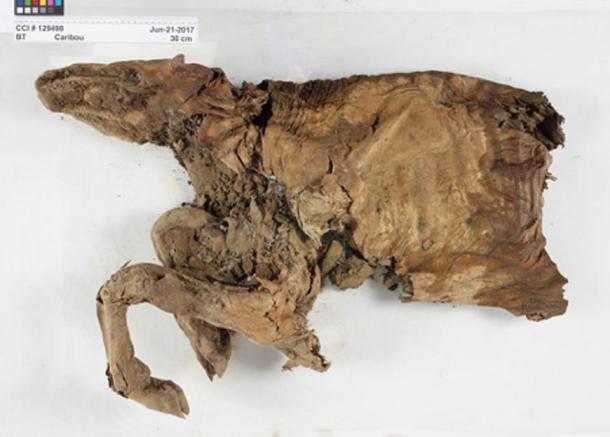
Mummified caribou found in Yukon. (© Government of Canada, Canadian Conservation Institute)
Paleontological Gold
The discovery of the aforementioned caribou calf was made by some miners who continue to mine gold in the Yukon long after the end of the Klondike Gold Rush. The mummy was found in June 2016 in a gold mining region that is owned by a well-known Canadian reality TV-star. The caribou was found at ‘the site of an 80,000-year-old volcanic ash bed,’ according to USA Today.
In July 2016, the wolf pup was also discovered by another gold miner working in the area. Both were very well-preserved, and according to the Smithsonian.com, ‘both animals’ fur, skin, and muscle are almost perfectly preserved.’ Due to their remarkable condition these offer some of the oldest specimens of mummified mammal soft tissue in the world.
- 70 Million Mummified Animals in Egypt Reveal Dark Secret of Ancient Mummy Industry
- Are These Tools Left by Paleolithic Travelers on the Beringia Land Bridge?
- A Conspiracy of Silence: Are We Older Than We Think We Are?
The Wolf Cub and the Caribou Calf
The wolf cub is the better preserved of the two ice age creatures and even its fur is in relatively good condition. The condition of the caribou is not as good, but its head, upper torso, and front legs are complete, and according to the Smithsonian.com ‘it provides a singular example of mummified animal skin, muscle, and hair.’
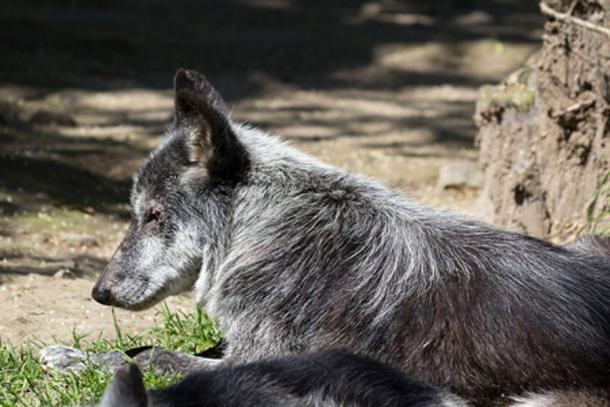
A modern Canadian wolf (Canis lupus) at Chapultepec Zoo. (CC BY-SA 4.0)
The two specimens were removed from the ground and scientists carried out a range of tests on the mummified remains. Carbon dating revealed that the caribou probably lived earlier than the wolf pup. These make them among the earliest specimens that have ever been uncovered in an Arctic region.
Beasts from the Ice
This is not the first significant find in the Canadian permafrost either. Some 30 years ago two miners found the incomplete mummified remains of a long extinct horse species known as the Yukon horse. However, the discovery of the caribou and the wolf pup are very significant as they are the oldest specimens with soft tissue that have been unearthed in Canada. Now the Canadians have specimens that can rival anything found in Yakutia in Siberia.
- Archaeologists in the Yukon find a Remarkably Intact Dart Lost by an Indigenous Hunter 1,000 Years Ago
- Skull Analysis Concludes the Americas Were Settled by More than One Wave of Migrants
- The Long Ago Person: Tracking the Canadian Ice Man
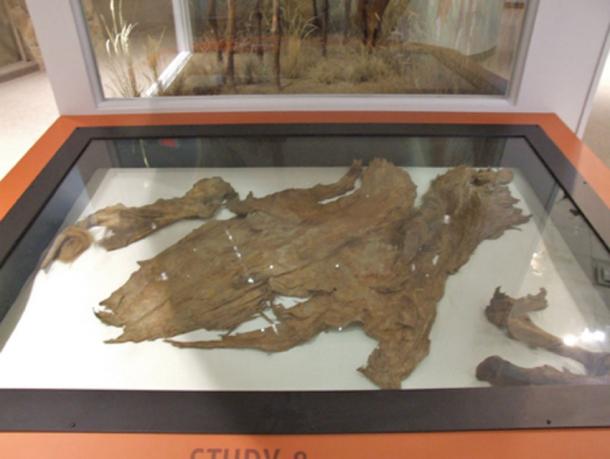
In 1993, Sam Olynyk, Lee Olynyk and Ron Toewes found at Last Chance Creek, near Dawson City, the then most complete and best-preserved specimen of a mummified extinct animal in Canada, the Equus lambei or Yukon horse. (CC BY-NC 2.0)
The Importance of the Finds
The find of the caribou and the wolf cub is really significant. Tests on the mummified animals are expected to ‘help scientists learn more about the ancient mammal species that roamed Beringia,’ stated Minister of Tourism and Culture, Jeanie Dendys, according to a Yukon Government press release. Premiere Sandy Silver further praised the find saying:
“These world class finds shed light on Yukon’s fascinating ice age history and will help us understand how these long-gone creatures lived in the environment they inhabited.”
Both the wolf pup and the caribou are ‘very important and inter-connected’ for the First Nation residents Tr’ondëk Hwëch’in. Chief Roberta Joseph stated:
“The caribou has fed and clothed our people for thousands of years. The wolf maintains balance within the natural world, keeping the caribou healthy. These were an amazing find, and it’s a great opportunity to work collaboratively with the Government of Yukon and our community partners.”
The local Tr'ondëk Hwëch'in people have agreed to place Zhur and the caribou cub on display at the Yukon Beringia Interpretive Centre in Whitehorse. Zhur in particular is so ‘clean and conserved’ that EurekAlert! reports “she will stay intact for years to come, allowing her to travel to other Yukon locations as well.”
Top image: Mummified wolf cub found in Yukon. Source: © Government of Yukon
By Ed Whelan
Updated on December 23, 2020.















